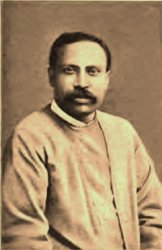
Phagmo Drupa Dorje Gyalpo [1110-1170], was one of the three main disciples of Gampopa Sonam Rinchen who established the Dagpo Kagyu school of Tibetan Buddhism; and a disciple of Sachen Kunga Nyingpo [1092-1158] one of the founders of the Sakya school of Tibetan Buddhism. He was the elder brother of Kathog Dampa Deshek [1122-1192], who founded Kathog monastery and the Kathog branch of the Nyingma school.
Tai Situ Changchub Gyaltsen was a key figure in Tibetan History. He was the founder of the Phagmodrupa Dynasty which replaced the old Mongol-backed Sakya regime, ending the Tibet under Yuan rule. He ruled most of Tibet as desi (regent) from 1354 to 1364, and as a law-giver, politician and religious patron, he created a heritage that lasted for centuries.

Rinpungpa was a Tibetan regime that dominated much of Western Tibet and part of Ü-Tsang between 1435 and 1565. During one period around 1500 the Rinpungpa lords came close to assemble the Tibetan lands around the Yarlung Tsangpo River under one authority, but their powers receded after 1512.

Tsangpa was a dynasty that dominated large parts of Tibet from 1565 to 1642. It was the last Tibetan royal dynasty to rule in own name. The regime was founded by Karma Tseten, a low-born retainer of the prince of the Rinpungpa Dynasty and governor of Shigatse in Tsang since 1548.

Gongma Drakpa Gyaltsen was a King of Tibet who ruled in 1385–1432. He belonged to the Phagmodrupa Dynasty, which was the leading regime in Tibet between 1354 and 1435. His reign was comparatively tranquil, but he was also the last ruler of the dynasty to wield full powers over the central parts of Tibet.
Drakpa Jungne was a king of central Tibet who ruled in 1432–1445. He belonged to the Phagmodrupa Dynasty which was the leading regime in Tibet from 1354 to 1435, and exerted some influence until the early 17th century. His reign saw the collapse of the political power of the dynasty, and the beginning of two centuries of internal strife.
Kunga Lekpa was a King of central Tibet who ruled from 1448 to 1481. He belonged to the Phagmodrupa Dynasty, which was the leading political regime in central Tibet from 1354 to 1435, and retained a certain political status until the early 17th century. His time saw the further fragmentation of Tibetan politics.
Ngawang Tashi Drakpa was a king of Tibet who ruled in 1499–1554 and 1556/57–1564. He belonged to the Phagmodrupa Dynasty which was the dominating regime in Tibet from 1354 to 1435 and maintained a degree of authority until the early 17th century. His rule is sometimes considered to be the last of importance in the history of the dynasty.
Drowai Gonpo (1508–1548) was a king who wielded power in parts of Central Tibet from 1524 to 1548. He belonged to the Phagmodrupa dynasty which reigned over Tibet or parts of it from 1354 to the early 17th century.
Norzang (1403–1466), in full Norbu Zangpo, was the founder of the power of the Rinpungpa Dynasty in Central Tibet.
Donyo Dorje was the third and most powerful prince of the Rinpungpa Dynasty that held power in much of Central Tibet from 1479 to 1512.
Dondup Tseten Dorje was the penultimate prince of the Rinpungpa Dynasty which held power in Tsang between 1435 and 1565.
Karma Tseten, also known as Zhingshak Tseten Dorje was a king of Upper Tsang in West Central Tibet. He was the founder of the Tsangpa Dynasty, that had an important role in the history of Tibet from 1565 to 1642, ruling in the period 1565-1599.
Karma Phuntsok Namgyal was a king of Tibet who ruled from 1618 to 1620. He belonged to the Tsangpa Dynasty that held power in Tsang since 1565 and was the foremost political and military power in Tibet until 1642.
Sönam Gyaltsen, the Sakya Lama Dampa was a ruler of the Sakya school of Tibetan Buddhism, which had a precedence position in Tibet under the Yuan dynasty. He is considered the greatest Sakya scholar of the 14th century and served as ruler for a short term in 1344-1347.








